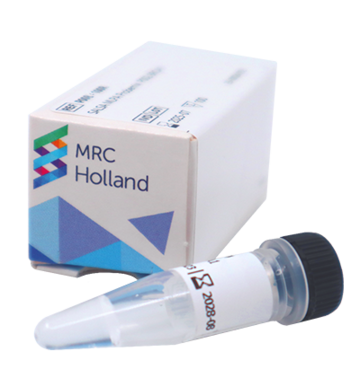The SALSA MLPA Probemix P187 Holoprosencephaly (HPE) is a research use only (RUO) assay for the detection of deletions or duplications in the FBXW11, PTCH1, SHH, SIX3, TGIF1, TRAPPC10 and ZIC2 genes, which are associated with holoprosencephaly (HPE). Deletions and duplications of the SIX2 gene, which is adjacent to SIX3, and GLI2, a former HPE candidate, can also be detected with this probemix.
HPE is a complex brain malformation resulting from incomplete cleavage of the forebrain (prosencephalon) during gastrulation, leading to both intracranial and craniofacial midline defects (GeneReviews: NBK1530). Clinical manifestation is variable and can include, among others, a wide spectrum of dysmorphism of the brain and face, neurologic impairment and seizures.
In 25%-50% of cases, HPE is caused by numeric or structural chromosomal abnormalities, most commonly trisomy 13, trisomy 18 and triploidy. Structural chromosome abnormalities have been reported for almost all chromosomes. Moreover, monogenic syndromic (18-25%) as well as monogenic nonsyndromic HPE has been described. Defects in the genes SHH (5.4-5.9%, 7q36.3), ZIC2 (4.8-5.2%, 13q32.3), SIX3 (3%, 2p21) and TGIF1 (<1%, 18p11.31) are among the most common causes of nonsyndromic HPE. Moreover, a 1.24 Mb duplication that included the FBXW11 gene (5q35.1) has been associated with HPE (Koolen et al., 2006). Other HPE candidate genes include PTCH1 (9q22.32) (Richieri-Costa et al., 2016), and TRAPPC10 (21q22.3, previously TMEM1) (Yamakawa et al., 1996). While GLI2 (2q14.2) was postulated to be another HPE candidate, it has become clear that pathogenic variants of GLI2 cause a phenotype with features overlapping with HPE as well as distinct symptoms (Bear et al., 2014).
More information is available at https://www.ncbi.nlm.nih.gov/books/NBK1530/





